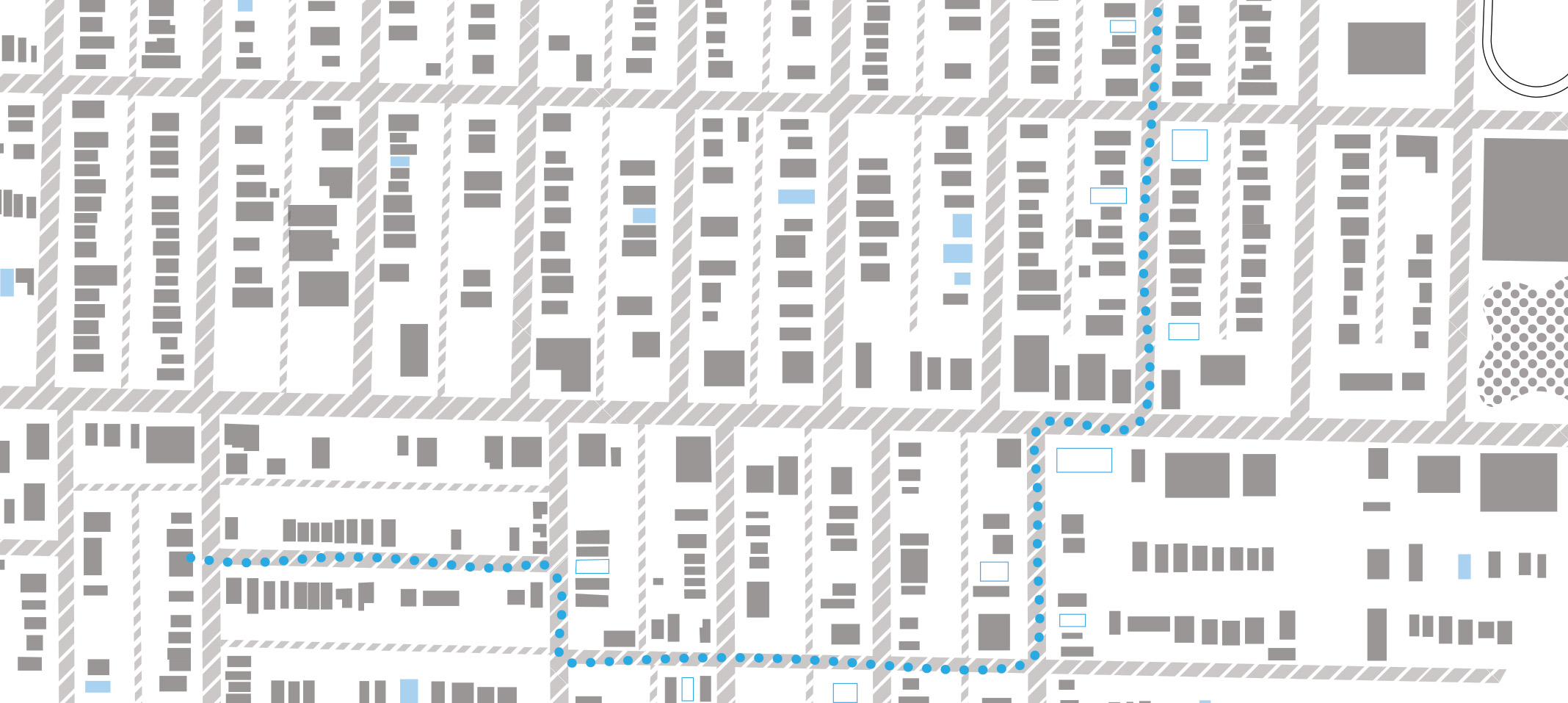
Sixteen: How Narrative Gave a Second Life to this Abandoned Neighborhood
Sixteen is a provocation that uses fictional narrative to guide the design process. As it applies to architecture, narrative prioritizes the human experience. It can be utilized and applied to the built environment in many different forms — but always in an experiential and emotional dimension that justifies an idea, spatial sequence, and form. It transcends daylight studies, space planning, and other data-driven findings — and transforms quantified space into place. The built environment is an expression of narrative itself that encourages its occupants to continue the story.
© Emily Kruse
Sixteen
There is something about dystopia and widespread abandon that hooks people upon first mention. We watch movies and play video games set in abandoned cities, and enjoy contemplating our options in the event that this were to come true. What many of us don’t realize is that, on smaller scales, vacancy is a reality that many people in the world face daily. Detroit was left in a state of urban decay when automobile production moved from the city. Thousands of hill towns in Italy have been abandoned due to environmental disasters and economic downturn. While the issue of vacancy in Kansas City, Missouri, seems small in terms of area, the prevalence of the phenomenon in neighborhoods east of downtown is concerning.
The count was backlogged in 2012 at over 1,000 buildings deemed too dangerous to support living conditions. By 2015, there were still over 800 left with more being added to the list daily. Mayor Sly James promised to designate $10 million of the city’s budget to the crisis with the hope of simultaneously demolishing the rising crime rate along with the buildings in these areas. Understanding that the removal of these structures would also contribute to the loss of intangible neighborhood characteristics, an alternative option was put in place. Selected buildings could be purchased at auction for $1 by a person willing to put the effort and money into renovating up to municipal code. The city would reimburse them the amount the city would have spent demolishing the building — about $6,000. While this might seem like a great deal, the cost to renovate up to code can cost more than six times the amount to demolish, leaving few willing and able to take advantage of this option.
What did this leave? Hundreds of vacant building awaiting their demise. Hundreds of empty, overgrown lots. Neighborhoods left wondering if their streets will ever feel as vibrant as their past.
Sixteen is a conceptual response to this local, national, and worldwide issue in the form of a fictional narrative. It is told from the perspective of a young, ambitious girl who represents the concern of her neighborhood and its desire to reimagine its lost or broken identity. This narrative is an attempt to open the doors of dialogue, making the discussion of architectural interventions simpler between architect and the general public. It is also an attempt to highlight the effect these interventions might have on their surroundings and the importance of understanding the implications of vacancy in all forms.
The narrator clothes the house similarly to the way she clothes herself daily, an outward expression of her chosen identity. She disguises the dilapidated facade she has grown up seeing from her bedroom window using remnants of already demolished buildings she passes on her way home from school. As she considers various options, she passes materials along to friends hoping to mend the tear in their neighborhood fabric. When the demolition of Sixteen inevitably occurs, she assembles the outline of its familiar form and hangs her bed sheet, hoping to preserve its neighborhood presence. Then, from her bedroom window, she sees the void outline also filled with the bed sheets of her neighbors, joining her in rebuilding what their neighborhood has lost.
Click here to view the full narrative, Sixteen, on Issuu.

© Emily Kruse



